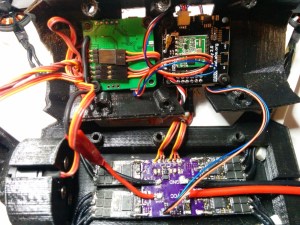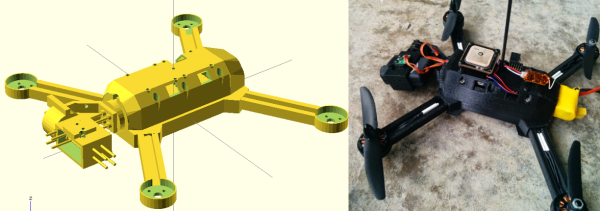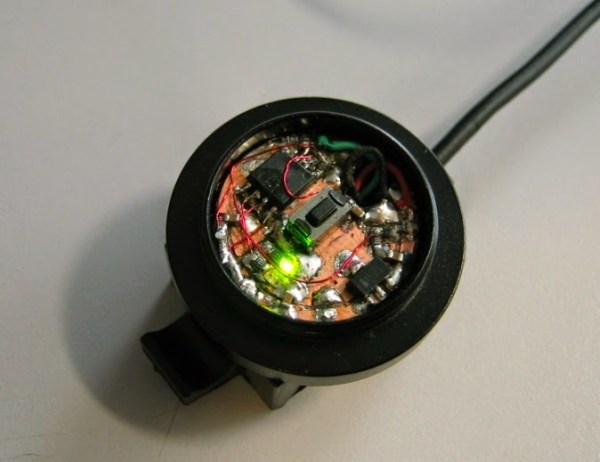[peabody124, aka James] has been active in the drone world for several years now, first with OpenPilot, then TauLabs, and now with his own Spark and Sparky2 boards. [James]’ latest creation is a 3D printed quadcopter using both his Sparky2 board and his Sparky2BGC Brushless Gimbal Controller.
[James] had always wanted a quad which would follow him and his friends while they were having fun, sort of like his own flying camera platform. His current setup is finally approaching that goal. [James] designed his new quadcopter to use his Sparky2 flight controller and the KISS 18 amp Electronic Speed Controller (ESC). He also incorporated a brushless gimbal to keep his Mobius action cam pointed at a whatever the drone may be tracking.
To keep the internal  layout clean, [James] designed a power distribution board which solders right up to the ESCs. The internal layout is seriously clean, with flat panels which keep the electronics safe during crashes.
layout clean, [James] designed a power distribution board which solders right up to the ESCs. The internal layout is seriously clean, with flat panels which keep the electronics safe during crashes.
The crash protection turned out to come in handy, as [James] managed to hit a couple of drone-eating trees during testing. Thankfully, having a 3D printed quad means spare parts are just a few hours of printing away. Check out the video below for footage of [James]’ test flights, and of the quad tracking his cell phone via an RF link.













